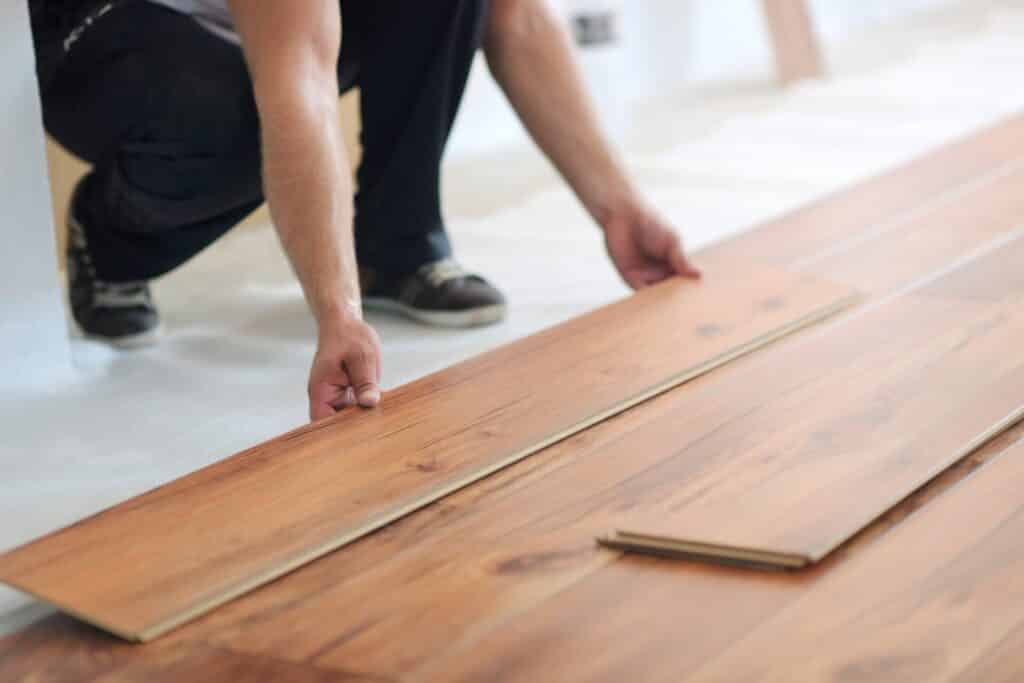
When it comes to kitchen flooring options, laminate has become an increasingly well-liked choice for many homeowners. With its affordability, toughness, and wide range of designs, laminate flooring offers a practical and stylish solution for kitchens of all styles. In this article, let’s explore the benefits of laminate flooring for kitchens, as well as provide some tips on how to choose the right laminate flooring for your kitchen.
Benefits of Laminate Flooring in the Kitchen
Laminate flooring offers several benefits that make it a great choice for kitchen spaces. Here are some of the advantages of using laminate flooring in your kitchen:
1. Affordability:
One of the major reasons why homeowners choose laminate flooring for their kitchens is its affordability. Laminate flooring is significantly cheaper than natural hardwood or natural stone options, making it an attractive option for those on a budget.
2. Durability:
Kitchens are high-traffic areas that require a flooring material that can hold out against heavy use. Laminate flooring is known for its durability and ability to resist scratches, stains, and fading. It is also less prone to moisture damage compared to some other types of flooring, making it a suitable option for kitchens where spills and accidents are common.
3. Easy Maintenance:
Laminate flooring is incredibly not difficult to clean and maintain, which is crucial in a kitchen where spills and messes are inevitable. An easy sweep or vacuum followed by a damp mop is usually all that is needed to keep laminate flooring looking clean and new.
4. Wide Variety of Designs:
Laminate flooring comes in a broad range of patterns, designs, and colors, granting homeowners to achieve the look they desire for their kitchen. Whether you prefer the appearance of hardwood, stone, or tile, there is a laminate flooring option available to suit your style.
Choosing the Right Laminate Flooring for Your Kitchen
Now that we have explored the benefits of laminate flooring for kitchens let’s delve into some key factors to consider when choosing the right laminate flooring for your kitchen:
1. Thickness:
The thickness of laminate flooring can range from 6mm to 12mm. Thicker laminate flooring tends to be more long-lasting and better at resisting moisture, which is important in kitchens where spills are common. Therefore, it is advisable to opt for laminate flooring with a thickness of at least 8mm for your kitchen.
2. AC Rating:
The AC rating of laminate flooring determines its durability and suitability for different areas of the home. AC1 and AC2 ratings are suitable for low to moderate-traffic areas, while AC3 and AC4 ratings are better suited for high-traffic areas such as kitchens. For optimal durability, choose laminate flooring with an AC rating of at least AC3 for your kitchen.
3. Water Resistance:
While laminate flooring is generally more water-resistant than solid hardwood flooring, it is still important to consider the level of water resistance offered by different laminate flooring options. Look for laminate flooring labeled as “water-resistant” or “waterproof” for added peace of mind in a kitchen environment. Some laminate flooring options come with a moisture-resistant core, preventing water from seeping into the board and causing damage.
4. Design and Style:
Laminate flooring offers a vast array of design options, allowing you to create the desired aesthetic for your kitchen. Consider the overall style and color scheme of your kitchen when choosing laminate flooring. Opt for a design that complements the existing elements of your kitchen, such as cabinetry, countertops, and backsplash, to ensure a cohesive and visually appealing space.
5. Underlayment:
Underlayment is a layer of material that is installed between the subfloor and laminate flooring. It provides various benefits, such as sound reduction, moisture protection, and additional comfort. Some laminate flooring options come with fixed underlayment, while others require a separate underlayment to be installed. Consider the certain needs of your kitchen when deciding whether to opt for separate underlayment or choose laminate flooring with attached underlayment.
Installation and Maintenance Tips
Installing laminate flooring in your kitchen can be a DIY project for those with some experience and the right tools. However, if you are unsure or prefer professional installation, it is advisable to hire a qualified installer to guarantee proper installation and avoid any potential issues.
Here are some installation and maintenance tips to keep in mind:
1. Acclimate the Flooring:
Before installation, allow the laminate flooring to acclimate to the conditions of your kitchen. This involves storing the flooring in the room where it will be installed for a few days, allowing it to adjust to the temperature and humidity of the space. This helps prevent any warping or buckling of the flooring after installation.
2. Use a Moisture Barrier:
While laminate flooring is more impervious to moisture than solid hardwood flooring, it is still important to take precautions to protect it from spills and moisture. Install a moisture barrier, such as a plastic sheet or underlayment with a moisture barrier, between the subfloor and laminate flooring to provide an extra layer of protection.
3. Use Protective Pads:
Use felt or rubber pads underneath furniture legs to prevent scratching and damage to the laminate flooring. This is particularly important in kitchen areas where chairs and stools are frequently moved around.
4. Clean Spills Immediately:
Despite its water resistance, it is still essential to clean up any spills or liquids on laminate flooring as soon as possible to prevent potential damage. Wipe up spills immediately using a damp cloth or mop to avoid any moisture seeping into the flooring.
5. Avoid Harsh Cleaning Products:
When cleaning laminate flooring, avoid using abrasive and harsh cleaning products that can damage the surface. Stick to mild detergents or specially formulated laminate floor cleaners, following the manufacturer’s recommendations.
In conclusion, choosing laminate flooring for your kitchen can provide a durable, affordable, and stylish solution for your kitchen flooring needs. Consider factors such as thickness, AC rating, water resistance, design, and underlayment options when selecting the right laminate flooring when planning for kitchen remodeling. Whether you opt for a hardwood or tile design, laminate flooring can transform your kitchen into a visually appealing space that is easy to maintain and withstands the demands of daily use.
